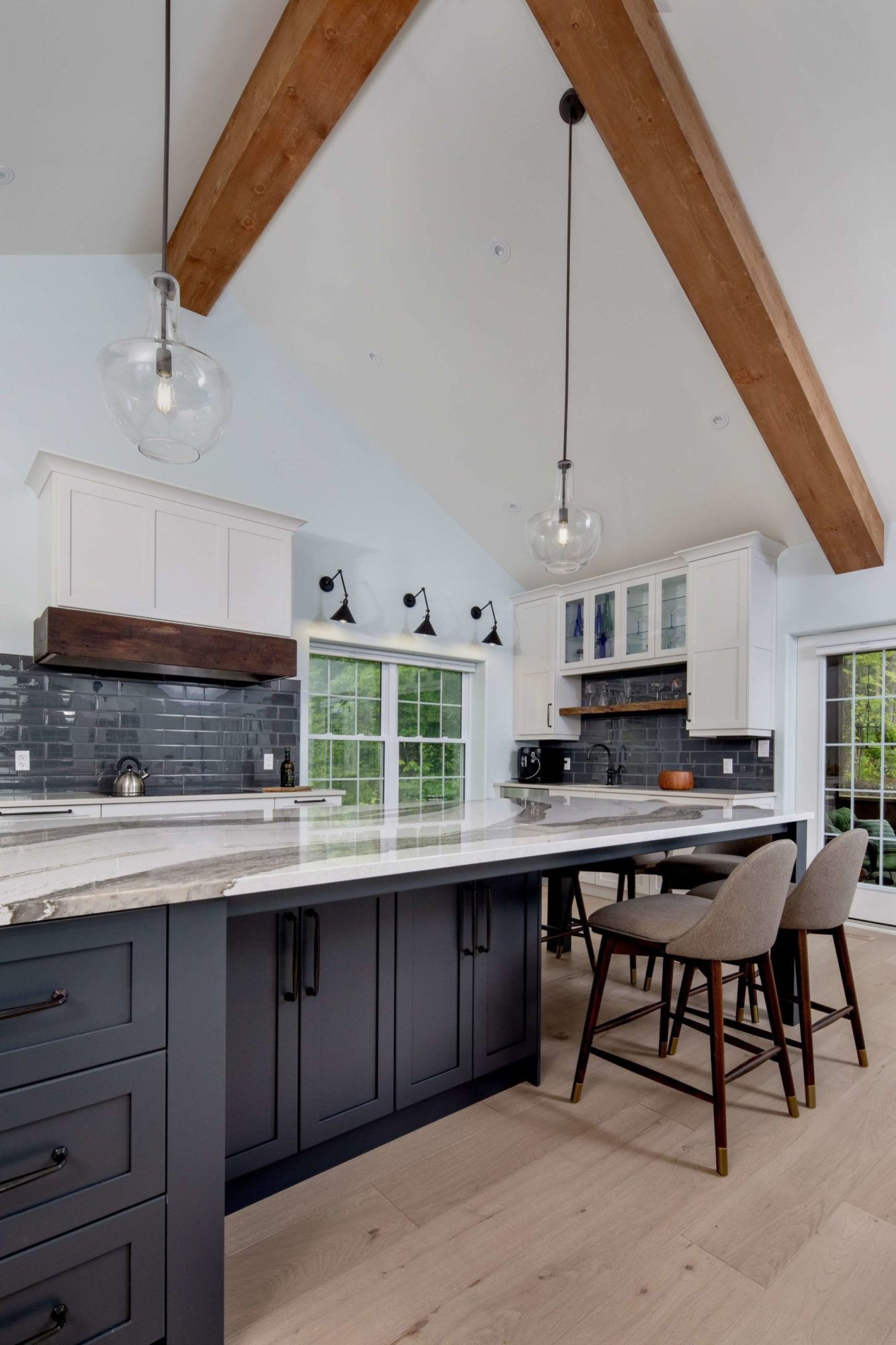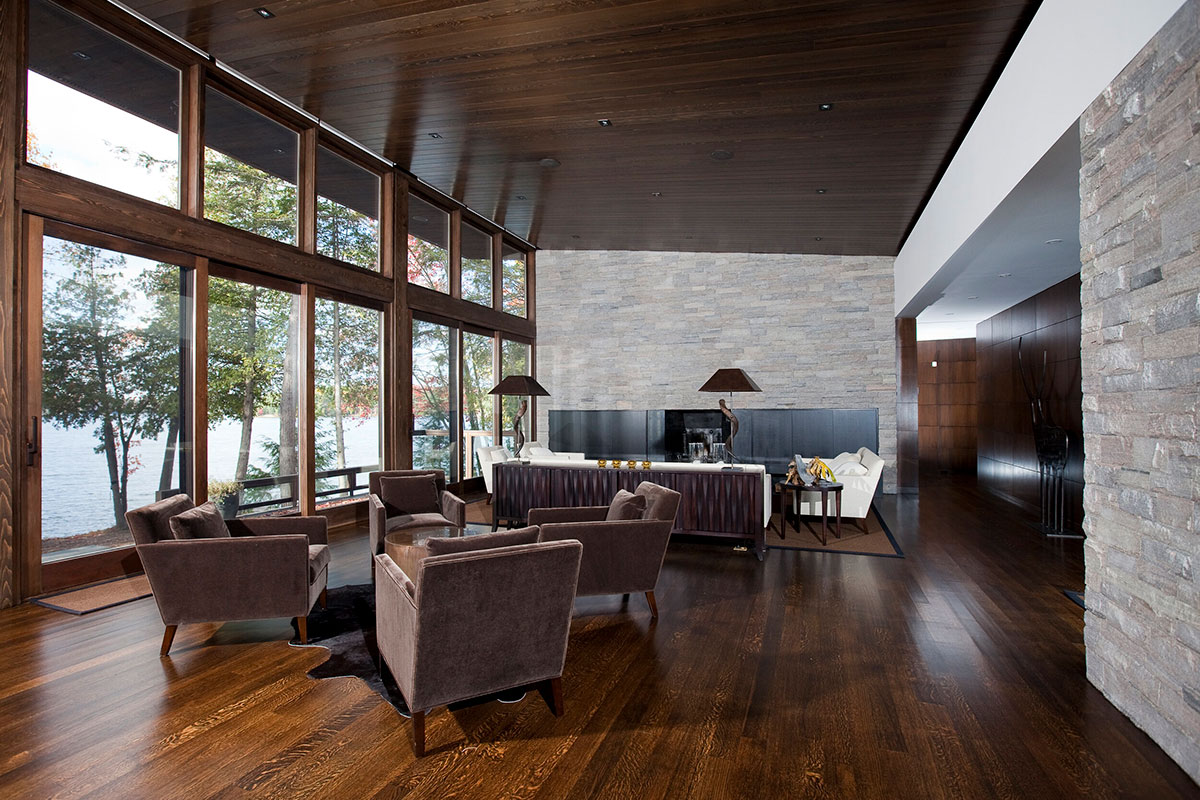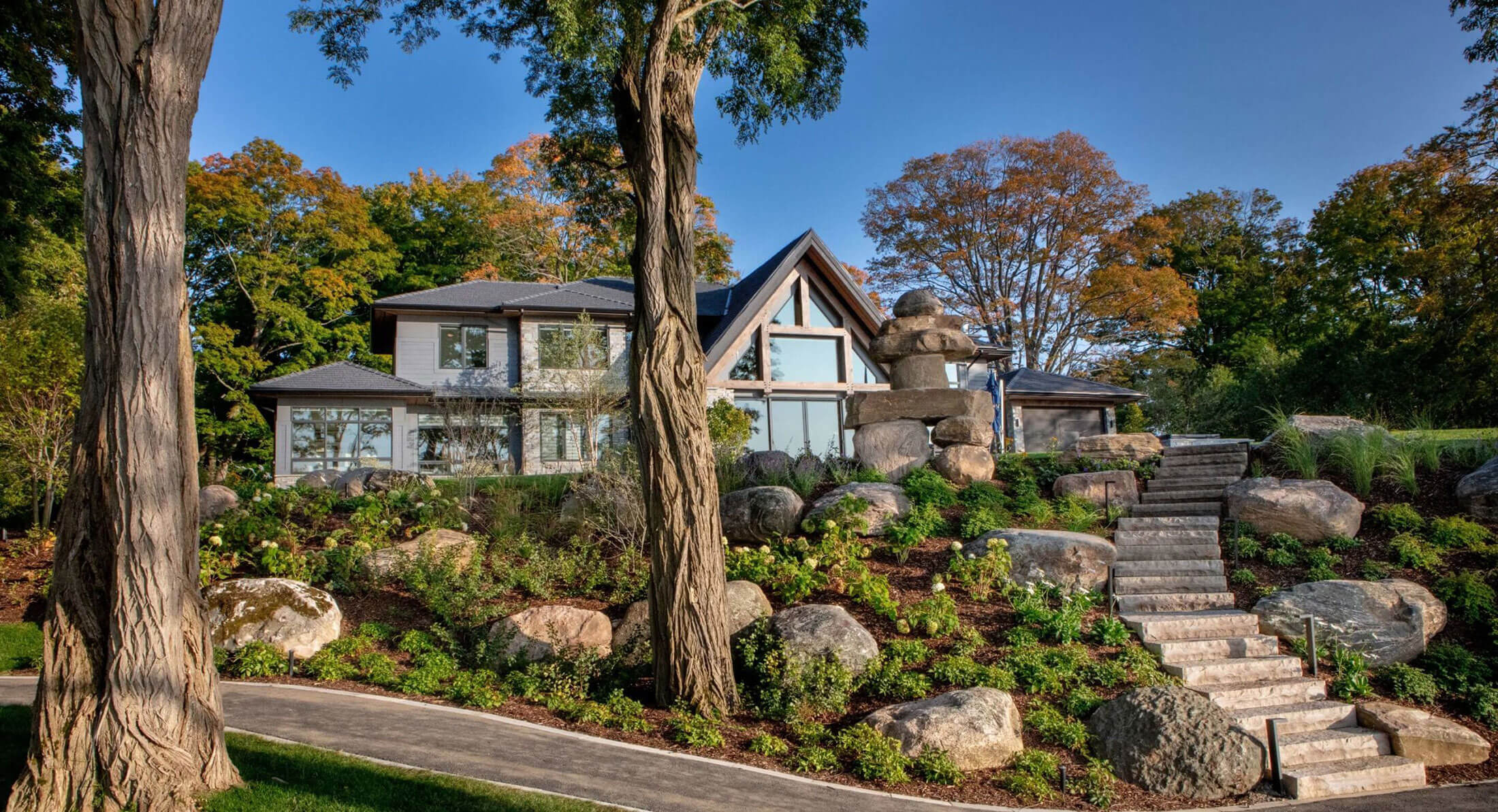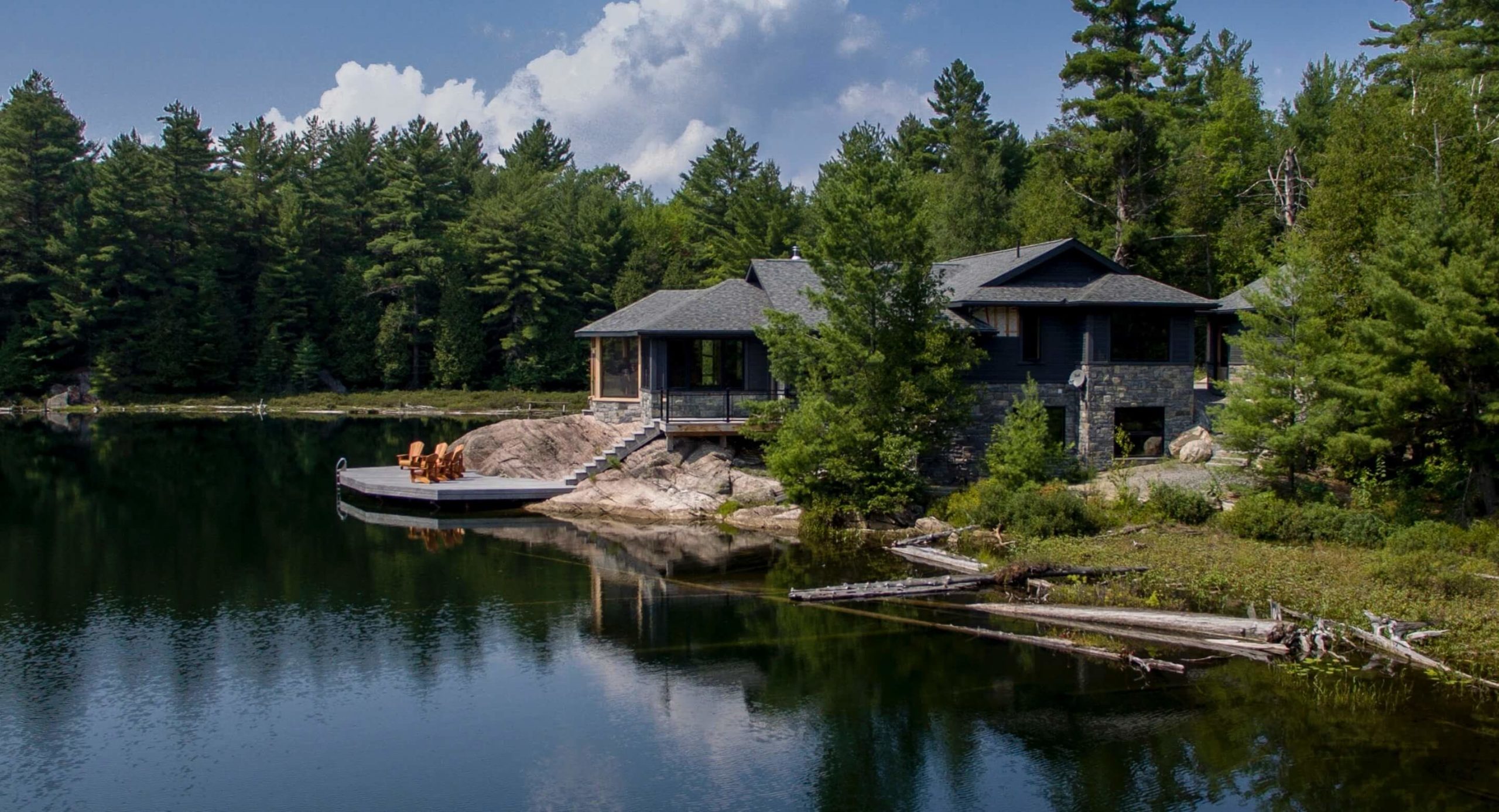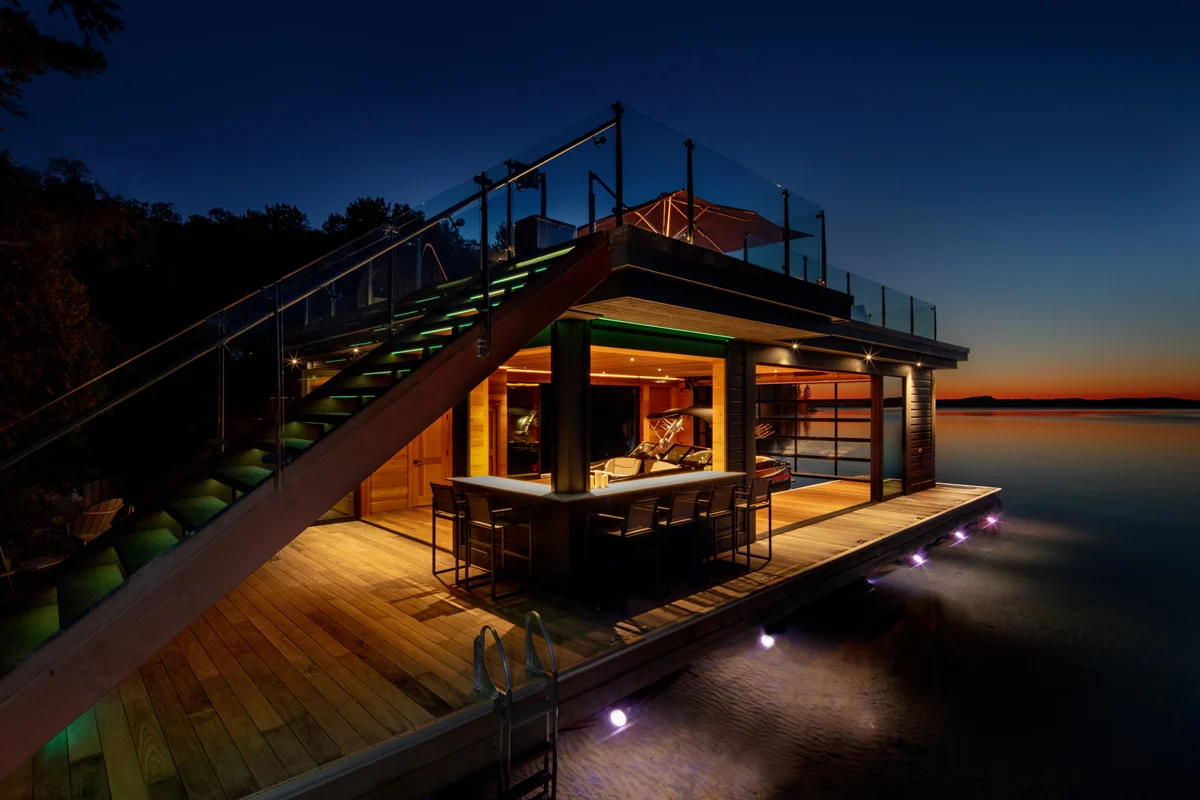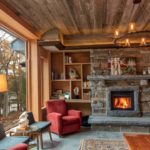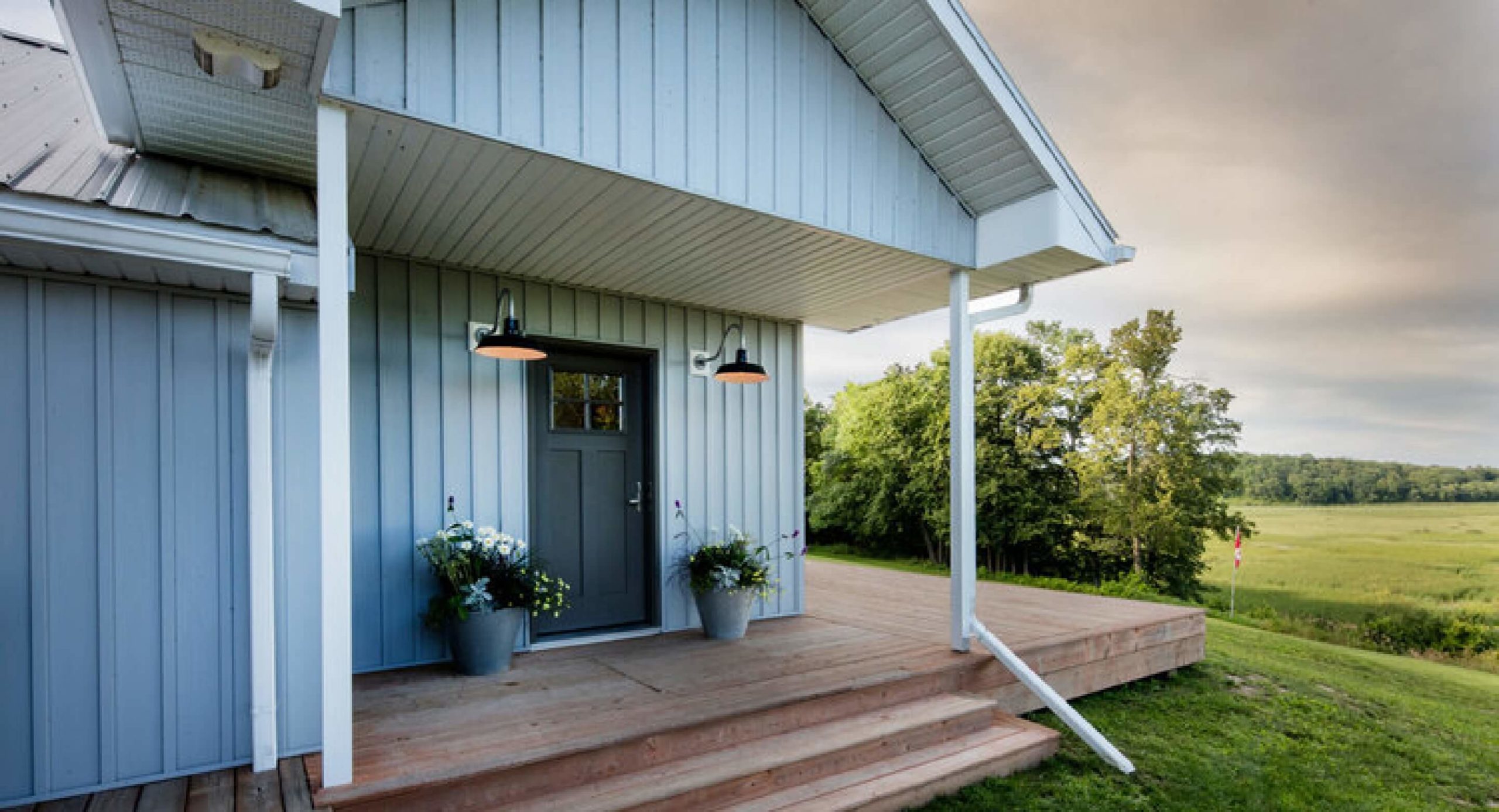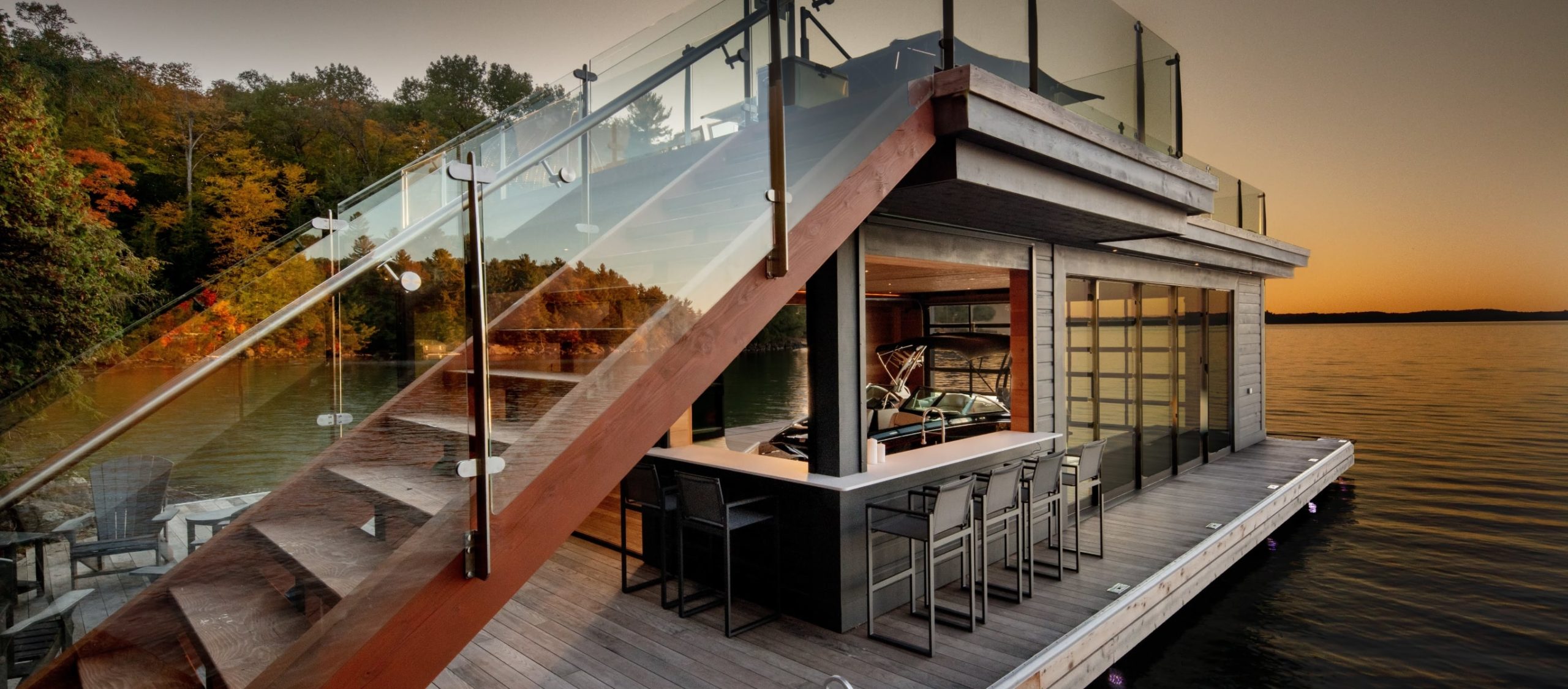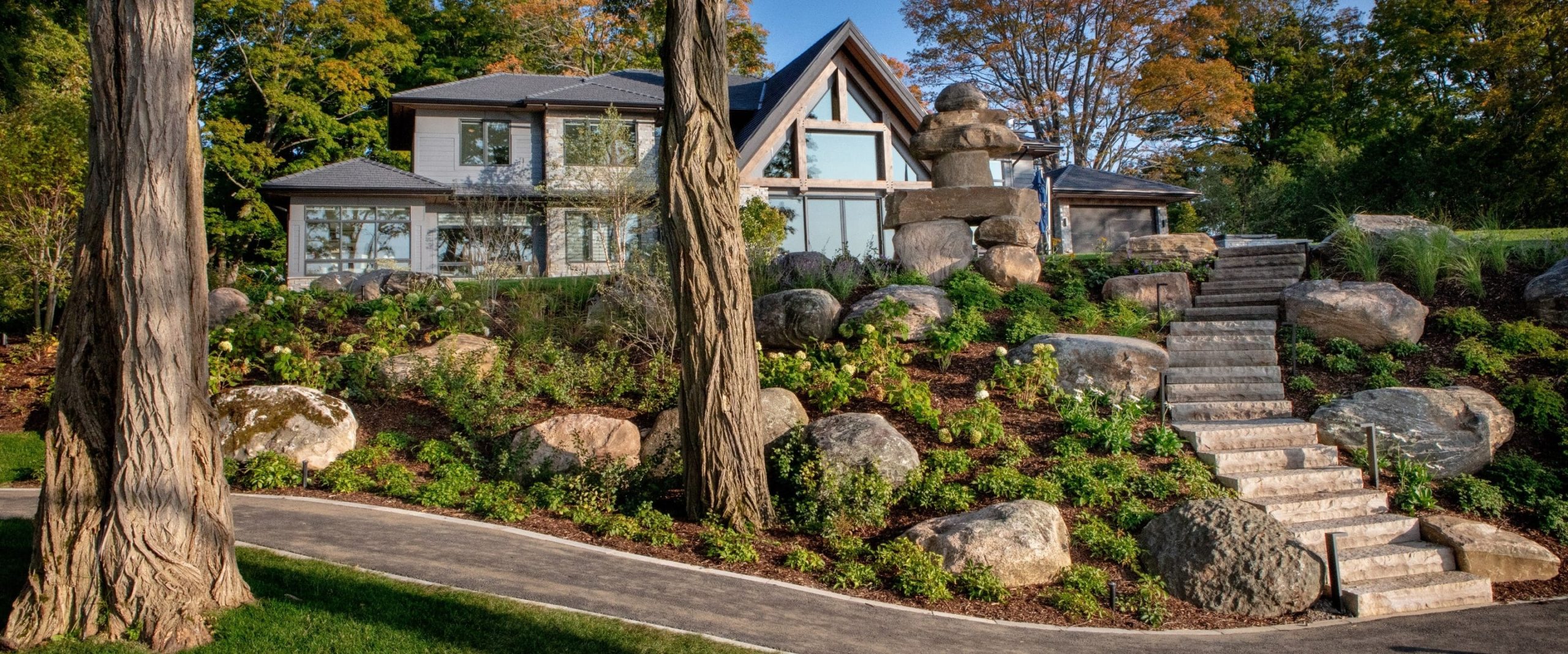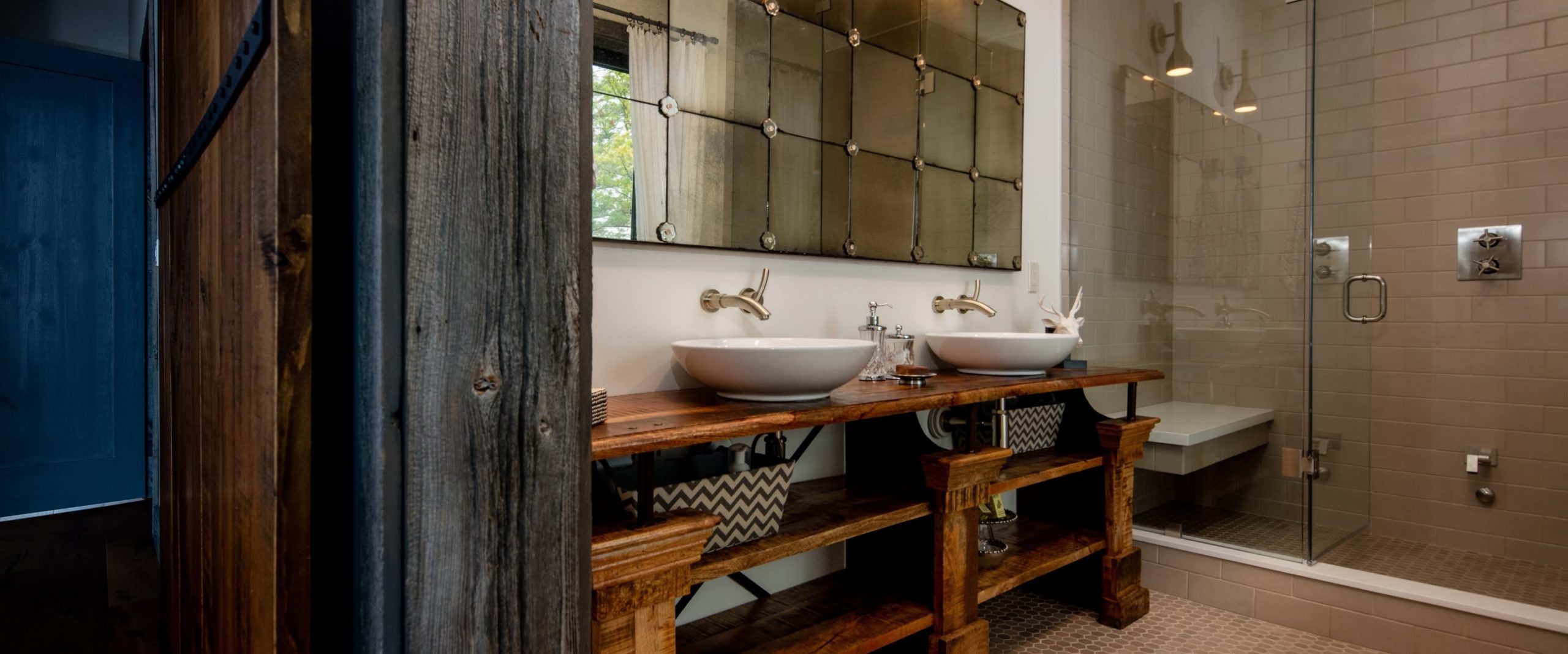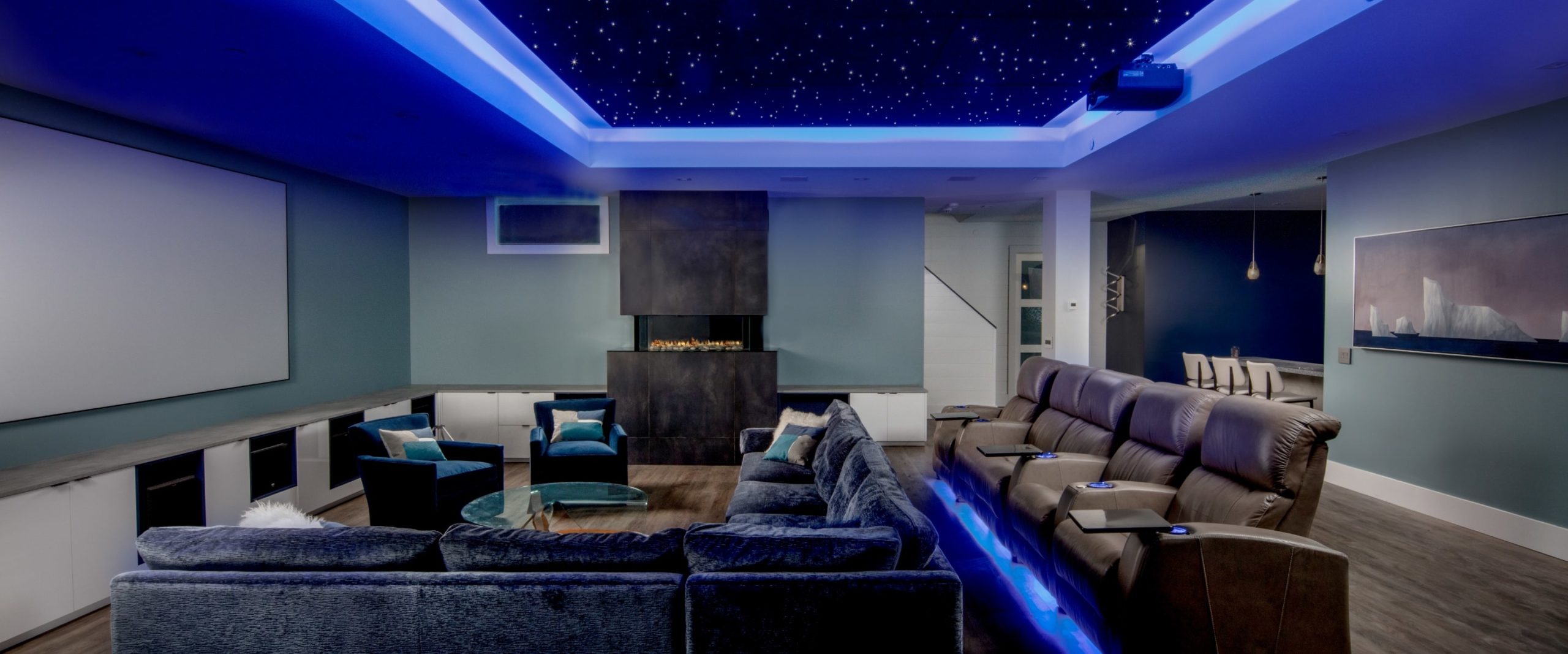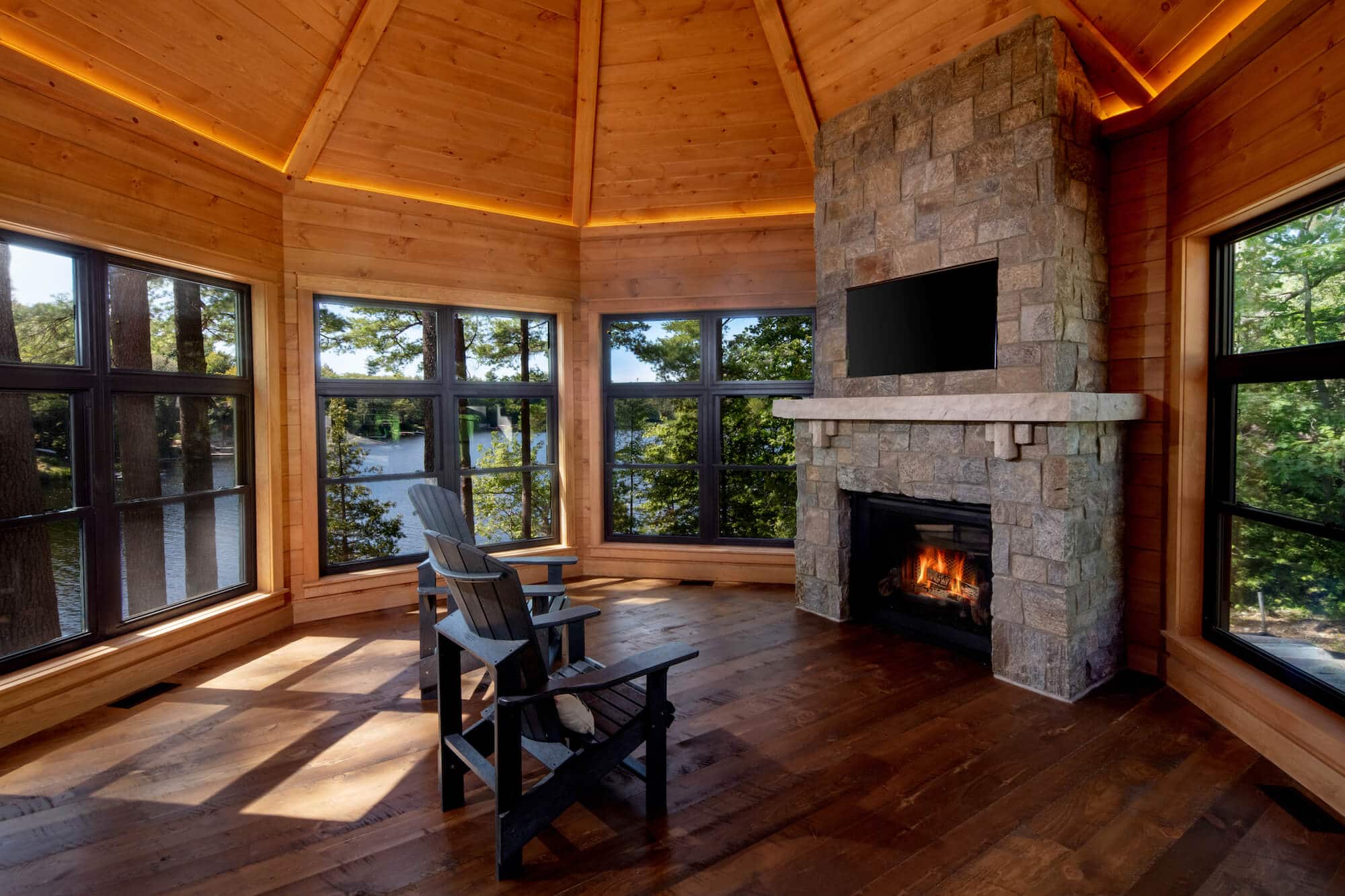Things You Might Not Have Considered When Making Your Custom Home Budget
Introduction
Building a budget can be daunting.
With so may things to consider, it can be tough to get a handle on everything – especially when it feels like new costs are popping up every day. We’ve compiled all the things you might not have considered when making your budget, from foundation to fixtures, so you can create a custom build budget that’s holistic and mostly free of surprises.
Chapter 1: The Site
The location and lot for your custom dream home can hide surprise costs depending on where it is and what it is.
Things you might not have considered:
The incline
A flat site is most cost-effective.
The terrain
Native soil is the most budget friendly option. Stone and rock may have to be blasted, which could exceed a typical budget.
The site condition
Starting with a clean site is the best for your budget, as you’ll have to cover the cost of any site clean up or clearing.
Landscaping
Does a tree (or trees) have to be removed? Do you require landscaping? This might affect your budget.
Location (market)
Be sure to keep a cities’ housing market in mind when creating your budget. There will be a big difference in budgets for a house in Toronto versus a house in Muskoka.
Location (access)
Is your site on an island? At the end of a remote dirt road? It may end up being more costly to get the materials to a more remote space.
Permits
Set aside extra budget for any building permits that may have to be obtained, plus regulatory and jurisdictional charges.

Best Bets
Best bet for builder’s budget: An inexpensive lot on flat, native soil.
Best bet for bigger budgets: A wooded waterfront lot on the Canadian Shield.
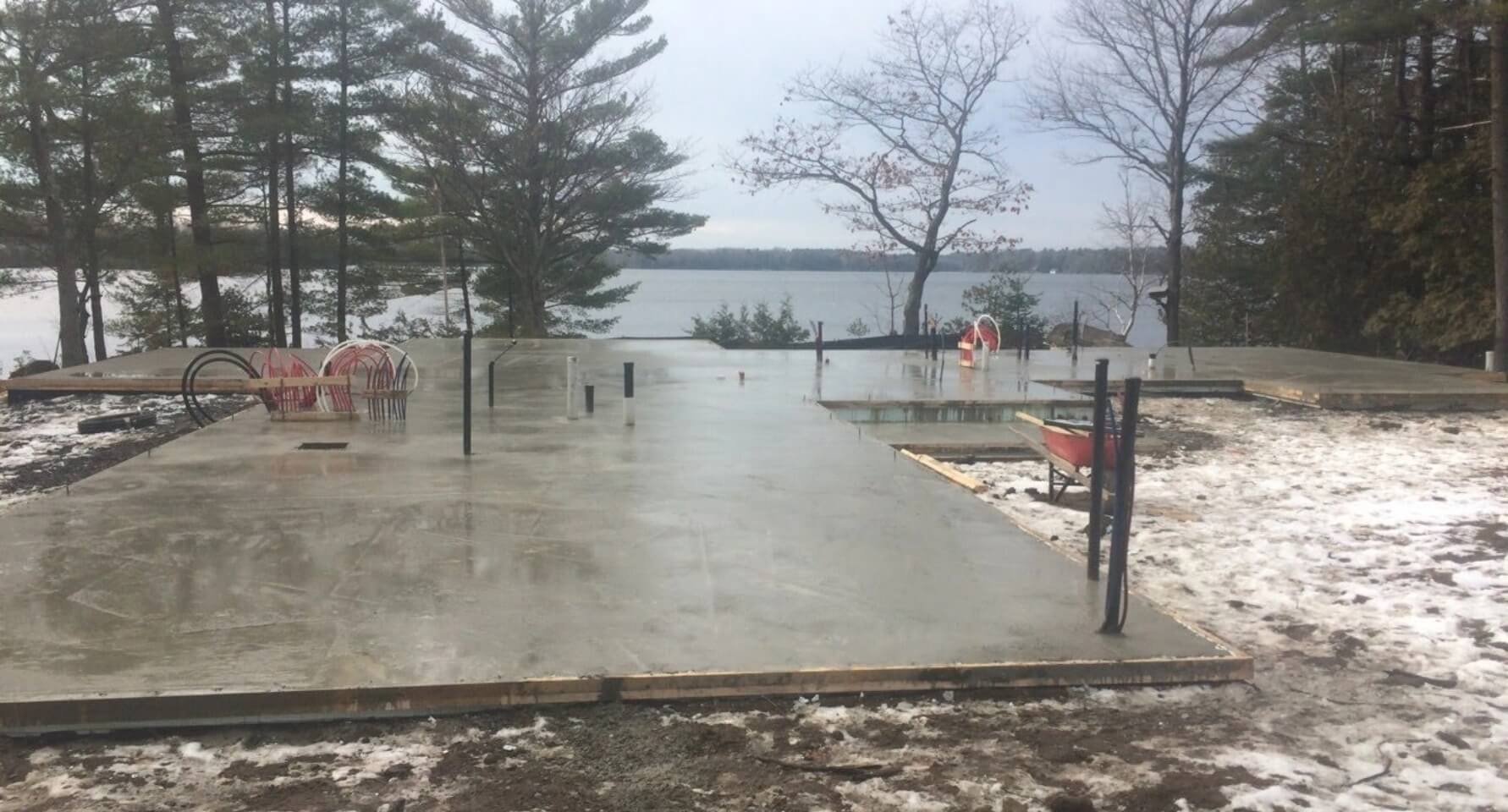
Chapter 2: The Foundation
The foundation is the first step in your build, and will carry the weight of your new home.
Things you might not have considered: The Type of foundation
Different types of foundation come with different budget considerations.
Slab Foundation
The most affordable option, a slab foundation is made of poured concrete. It’s low-maintenance to pour, but makes plumbing fixes difficult since the pipes will be under the slab and tougher to access.
Crawl Space Foundation
A crawl space foundation is built a few feet off the ground. This means it’s better than a concrete slab for plumbing access, and is also warmer, but a crawl space foundation needs be to insulated and conditioned to avoid the growth of mold and fungi — so set aside extra budget for that.
Basement Foundation
This is an 8ft (or deeper) hole with poured concrete walls and a concrete floor. A basement foundation gets you more space at a lower cost per square foot, plus you get energy-efficient living spaces that stay cool in the summer and warm in the winter. But, basement foundations come at an increased cost, especially if finished, plus require even more budget to install proper drainage like a sump pump to avoid flooding.
The Type Of Materials
Take something like ICF (Insulated Concrete Foundation). ICF is about 30% more expensive than standard concrete foundation, but gives you a warmer, more comfortable basement space, plus it’s better value in the long run because it eliminates energy loss and thermal bridging so you’ll save on energy bills.
Extra Stability
Whichever foundation you choose, you’ll have to account for metal or rebar rods in your budget. These will increase stability and are installed according to the Building Code Requirements for the design.

Best Bets
Best bet for builder’s budget: Square or rectangle house with slab foundation with few corners and bump-outs.
Best bet for bigger budgets: House with a finished walk-out basement made with ICF.

Chapter 3: The Frame
Once your foundation has been poured, the next step is building the frame. The frame dictates the size and layout of the home as well as the shape and style of the roof.
Things you might not have considered:
The Shape Of The Home
When it comes to frame shape, simplicity is more cost-effective. The shape affects the roof structure, and a complex roof structure means more cost. So, while angles and corners add character and architectural flair, you will need to set aside extra budget for them.
The Number Of Storeys
The most cost-effective options are a bungalow with a simple roof, or a 2-storey house with less basement space. This is because storey and 1 ½ storey homes require more labour to frame their roof structures, and also have less usable space due to sloped ceilings on the 2nd floor, which makes the framing cost higher per usable square foot.
Square Footage
The amount of square footage will make an impact on the cost to install the framing. More space means more time and materials necessary.
The Materials You’re Using
If you go with lumber framing, be prepared when making your budget for lumber costs to fluctuate. If you go with structural steel framing, expect to pay a little more, but to get a frame which is both more durable and environmentally-friendly.
Additions
If you make any changes to the design of your home after framing has begun, be prepared for an additional cost.

Best Bets
Best bet for builder’s budget: Square bungalow with lumber framing, a straight stair run, and a simple, moderately steep gabled roof.
Best bet for bigger budgets: Architectural 1 and ½ storey dream with structural steel framework, overhangs with covered porches, and multi-gabled steep roofs with flat areas.
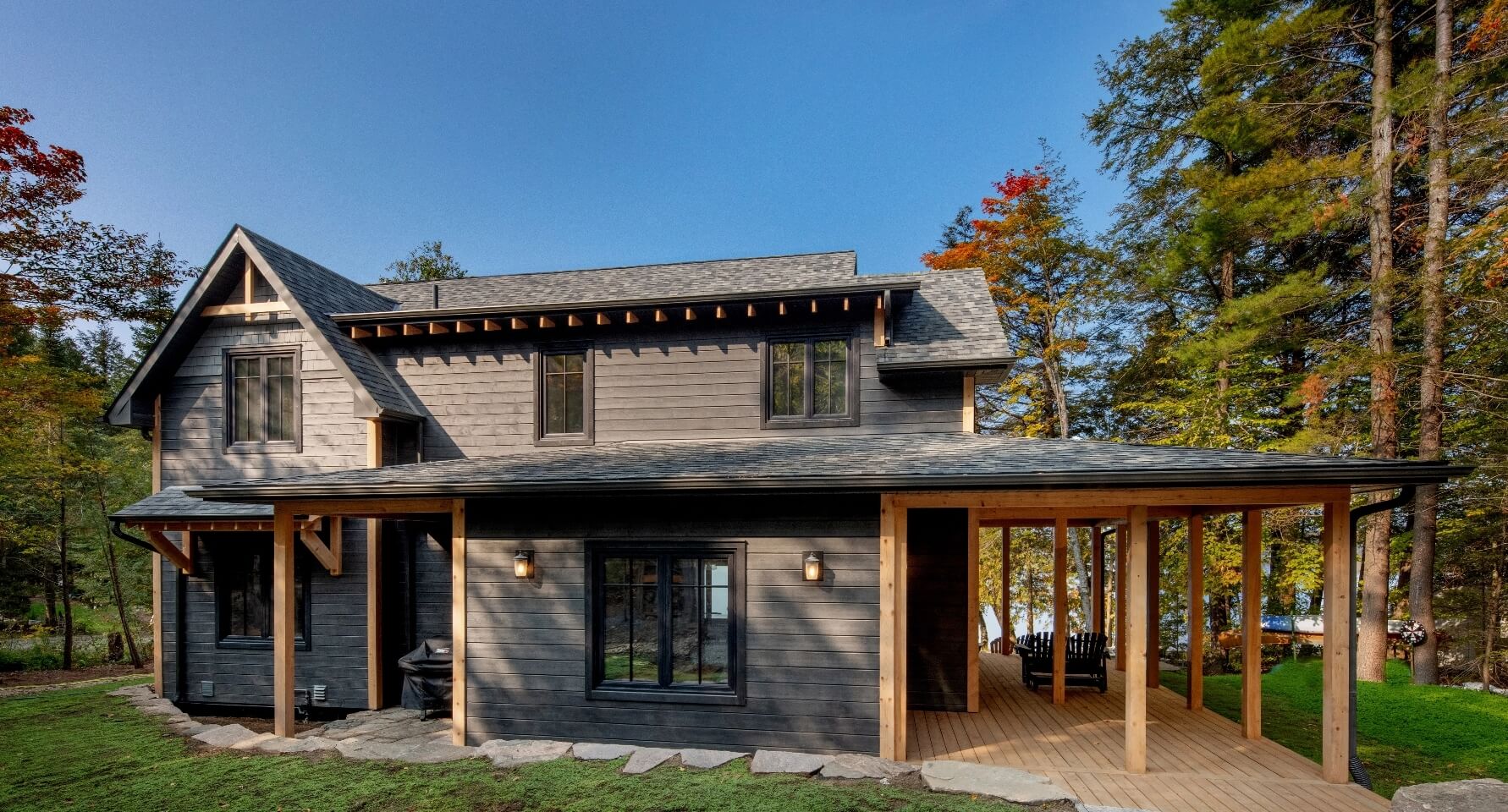
Chapter 4: The Exterior Finishes
From vinyl to brick to stone, each exterior finish comes with different looks, different price points, and different features.
Things you might not have considered: Type of material
Material choice is the biggest budget differentiator when it comes to exterior cladding.
Here are some of the options, but by no means is it all of them, so talk to your builder if
you’re choosing a material that’s not on this list.
The Shape Of The Home
The most ubiquitous siding, horizontal lap siding offers a range of options. It can be made from wood, vinyl, aluminum, or fiber cement and comes in a range of colours (or, you can choose your own).
The cost also comes in a range of options: vinyl is the most wallet-friendly, whereas fibre cement or prefinished wood require additional budget.
Another thing to account for in your budget? Colour. Choosing a stock colour is less expensive than creating a custom colour.
Shingles
Shingles also come in a range of materials, including vinyl (polymer), cedar shakes, and fiber cement.
Cost-wise, shingles are roughly equivalent to horizontal lap siding, except for cedar which comes at a higher installation price.
Board And Batten
Coming in both natural and pre-finished options, the cost of board and batten can vary depending on the wood species. It requires a bigger investment than both lap siding and shingles, so be prepared when making your budget.
Brick
Durable, beautiful, and low-maintenance, brick is a classic finish for a reason! But that durability and low-maintenance come at a price, so be prepared to build a bigger budget around brick.
Stone/Stone Veneers
Like brick, stone and stone veneers are also durable and low-maintenance. They come in a wide range of colors, textures, and sizes, so are easily adaptable to just about any aesthetic, but expect to pay the most for this finish. While synthetic stone veneers are the more budget-friendly option of the two, connoisseurs say it doesn’t have the same charm as the real thing.

Best Bets
Best bet for builder’s budget: Simple, durable vinyl siding.
Best bet for bigger budgets: Natural stone.
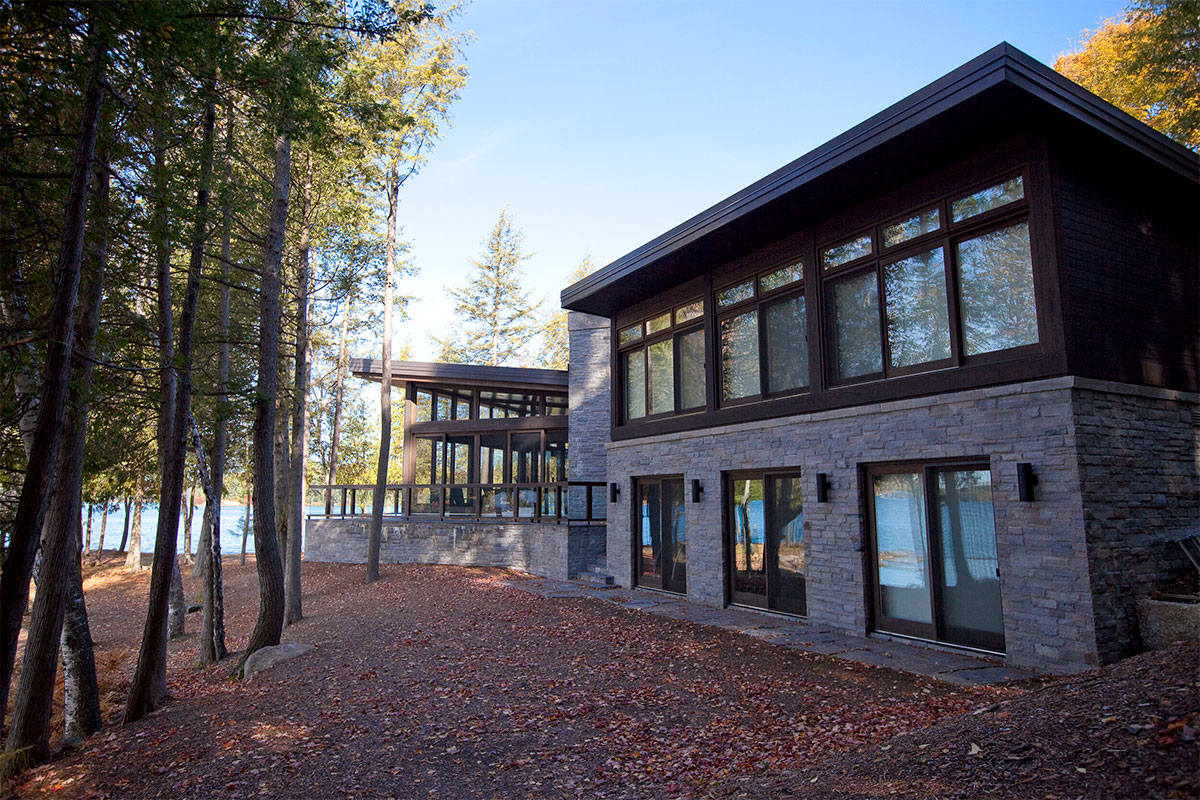
Chapter 5: Windows and Exterior Doors
Quality windows and exterior doors are an important investment, as they provide security, add style, create warmth, and allow natural light into your house.
Things you might not have considered:
The Number Of Windows
The more windows you need to install, the more it will cost.
The Size Of The Windows
Large windows, while beautiful, may need special glass and fabrication requirements, so make sure to save room in your budget if you’ve got your heart set on massive picture windows.
The Material Around The Windows
The window sash materials you choose will affect the cost of your build, too. Vinyl is the inexpensive, low-maintenance, durable choice, but it lacks the visual flair of the finer finishes. If you’re looking for that ‘wow factor’ wood has a beautiful natural appeal but comes at a higher price. Aluminum-clad wood windows have a best-of-both-worlds approach that’s both durable and good-looking, but also comes at a higher price.
How The Windows Open
Sliding windows
Open the windows by sliding them inside their frames by hand, and choose between horizontal or hung slider. These windows feature weather stripping around the sash and frames, so they’re not as energy efficient as crank windows, but do come at a lower price point.
Crank windows
Open the windows with a crank mechanism, and choose between casement or awning style. These windows feature a compression seal around the moving parts, so they’re supremely energy efficient and easier to clean — which is why they are slightly more expensive than sliding windows.
The Size Of The Doors
While big doors do undoubtedly have a grand impact, they’ll also impact your budget. Expect to pay more the larger your doors are.
The Style Of The Doors
You have the option of lift & slide doors to seamlessly open up patio and/or pool areas. These doors are essentially glass walls that slide and fold away, allowing you to completely open up your space. A beautiful feature, but expensive.
What’s Around The Doors
Steel
Steel doors are low-maintenance when finished properly, secure, and come in a range of colours and styles. In terms of cost, steel doors are the least expensive of the door materials, but expect to pay more for a door with a lower gauge. The higher the gauge, the thinner the steel, and the more flimsy the door. 24- and 22-gauge are the most common in the housing market. 24-gauge is the least expensive, but is prone to rust and paint chips so is not a long-term solution. 22-gauge is thicker, holds paint well, and can have a grain cut into it for a simulated wood appearance — more expensive, but also a better investment.
Fibreglass
Fibreglass doors are versatile in look (including wood grain), resistant to dents and scratches, can last for years without mold or rust, are very secure, and — unlike steel and wood — don’t need to be finished at an extra cost to be low-maintenance. Quality is key, though, and you do get what you pay for, so add room in your budget for more expensive fibreglass options as cheap fibreglass can crack in the cold weather, or the finish may quickly deteriorate.
Wood
Wood is the most expensive material for a door, but you do have two options with different price points.
A solid core wood door, made with a solid wood core with a thin piece of plywood or laminate on either side and a hardboard backing. Susceptible to fading, will have to be refinished, and requires a storm door — but, a good way to get a wood door without breaking the bank.
A solid wood door, is all wood, all the way. It’s by far the heaviest, most secure, and best-looking door, but it also comes at the most expensive price. If purchased from a quality manufacturer, they’ll resist most warping and expanding, plus they can be sanded and refinished with no problems.

Best Bets
Best bet for builder’s budget: Double glazed thermopane windows, argon-filled with Low E coating and vinyl sashes.
Best bet for bigger budgets: Triple-pane glazing with a U-Factor of 0.15 and natural wood sashes.
Best Bets
Best bet for builder’s budget: Standard-sized 24-gauge steel doors.
Best bet for bigger budgets: Large lift & slide glass doors out to the patio and large solid wood doors at the entrance with sidelights on both sides.
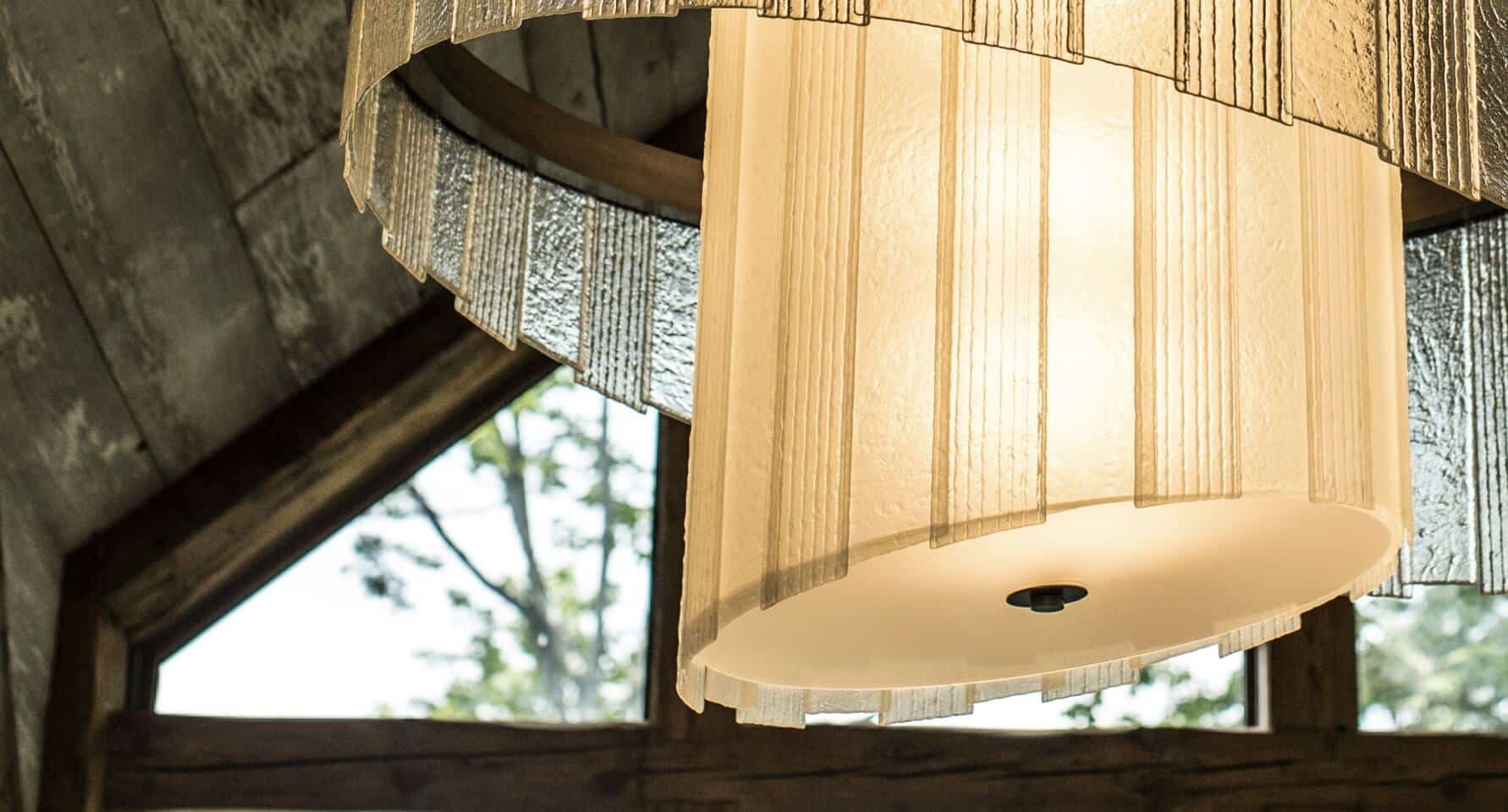
Chapter 6: Interior Finishes
The extras, from appliances to door handles, which give your home character but can add to the budget in hidden ways.
Things you might not have considered:
Countertops
Classic laminate countertops cost the least, while eye-catching solid surfaces like marble, granite and quartz will cost more.
Fixtures + Plumbing
Fixtures come in a huge range of prices. A faucet alone can run between $60 – $1000 (or more!), which adds up when you take the number of bathrooms (and the number of fixtures you’ll therefore require) into account.
Interior Doors And Hardware
Door materials range from wallet-friendly stock with an MDF hollow core to top-of-the-line, custom-made, carved solid wood. Beautiful, but pricey. Remember, also, that those doors need hardware, which could run between $50-$500, depending on style and materials.
Flooring
If you don’t want to break the bank on flooring, opt for vinyl over tile in the kitchen and bathrooms. In the other rooms, set aside extra budget if you’d like hardwood or carpet on the floors, while laminate is the more affordable option.
Appliances
Save budget by selecting affordable appliances throughout. Or, look at your lifestyle and decide which appliances are worth the splurge: if you cook a lot, invest in higher-end Wolf and Sub-Zero style appliances. If you have kids, perhaps it’s better to splurge on a top of the line high-capacity stacked washer and dryer.
Wall + Ceiling Finishes
Drywall is the best bet for a smaller budget, while wood planking and specialty finishes are best for budgets with more room. As for the ceiling, crown moulding adds a regal touch but does come at a price, as do specialty ceiling finishes like panelled ceilings and coffered ceilings. Beam accents add style to any room, but add cost to your budget, also.
Cabinetry
Cabinets with all the bells and whistles will set you back significantly – so be prepared. Be cognizant of the type of door, the type of pull, whether you are having glass, whether there is crown molding or specialty products – as all of these extra touches can quickly balloon a budget.
Closets
The more complex the storage, the more expensive the closet will be. Walk-ins cost more to finish, especially ones with built-in drawers, shoe spaces, and hanging areas.
Fireplaces
While a fireplace is an extra — especially if you’re budget-conscious — there is a way to get one at different price points if you have your heart set on a hearth. If your budget is on the smaller side, go for a fireplace with a simple mantel and a drywall surround. If you’re ready to invest a little more, choose a fireplace with stone cladding, built-ins on either side, and a fancy mantel.

Best Bets
Best bet for builder’s budget: Laminate countertops and floors, stock doors, vinyl bathroom and kitchen floors, affordable appliances, simple cabinets and closets, drywall throughout, and splurge on a classic fireplace a simple mantel.
Best Bets
Best bet for builder’s budget: Granite or quartz countertops, tile and hardwood floors, crown moulding, coffered ceilings with accent beams, natural stone finishes, cabinets with glass, walk-in closets with built-in storage and shelving, and a stunning fireplace with stone cladding and an eye-catching mante
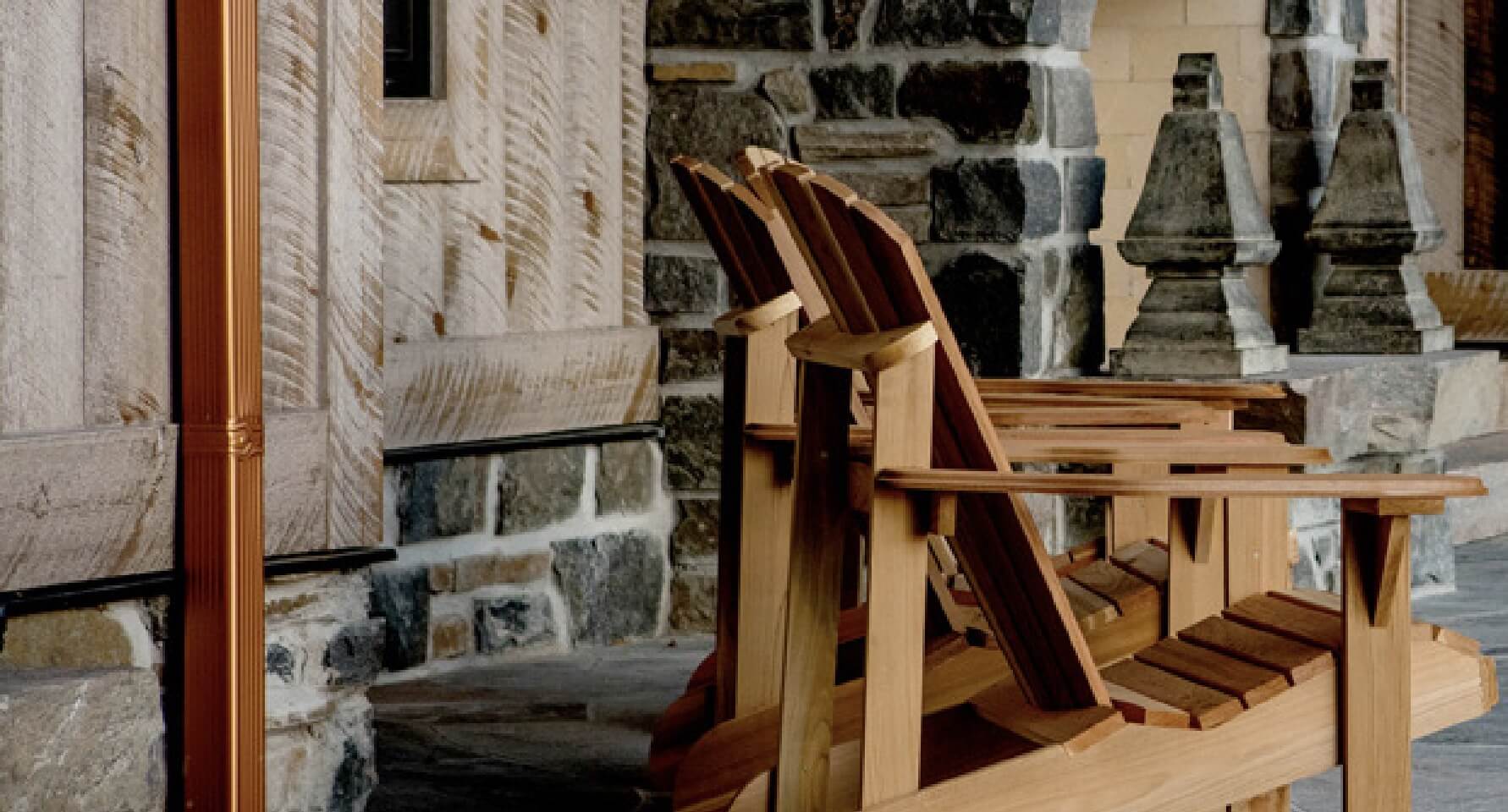
Chapter 7: The Extras
Additional costs beyond the site and materials that you might not have planned for, but which might pop up during the design/build. We advise setting aside a little extra budget in an emergency fund for these unforeseen expenses!
- Cost of moving from your old house to your new custom home
- Aesthetic landscaping for the front or back yards
- Weather delays
Inspection fees - Additional septic requirements: If you purchase a lot with an existing septic system then increase the size of the home, or if the existing septic system does not meet current code, you might need to invest in a larger septic.
- Development fees for a new lot
- Demolition fees for a teardown on an existing lot.
- Whatever might be discovered during excavation: rock or bad soil conditions are just a few of the many things which could add a little extra to the budget.

At Gilbert + Burke, we know budgets. We can work with you to build a budget for your dream home that suits you, whether that means helping you get a handle on things you might not have considered or simply offering expert advice on where to splurge and where to save.
Whatever your budget, let’s make your dream home or cottage a reality.



